It can be hard to find plants that flower in fall, which is why black dalea (
Dalea frutescens), also called black prairie clover, is a great choice for those who want to extend the blooming season in their landscape. This Southwestern native is drought-tolerant, thrives in full sun and isn’t fussy about soil. It has a low, mounding growth habit, and its light, airy foliage adds beauty while providing welcome color to the fall landscape.
Not in the Southwest? Browse plants native to other regions of the U.S.
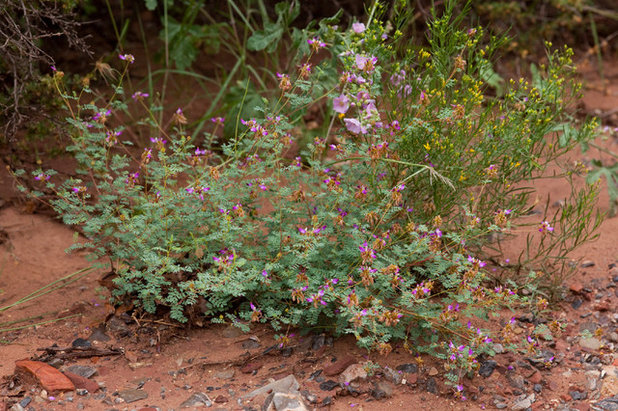
Patrick Alexander
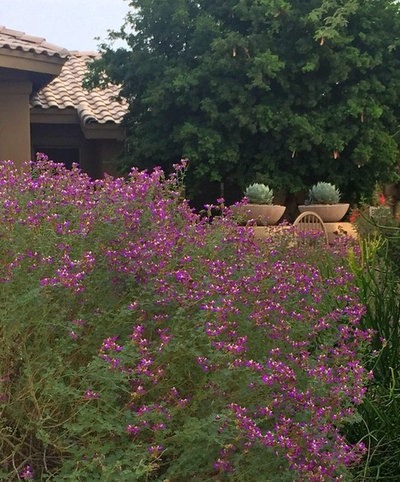
Noelle Johnson Landscape Consulting
Botanical name: Dalea frutescensCommon names: Black dalea, black prairie clover
Origin: Native to New Mexico, Oklahoma and Texas and into northern Mexico
Where it will grow: Hardy to 15 degrees Fahrenheit, or minus 9 degrees Celsius (USDA Zone 8; find your zone)
Water requirement: Drought-tolerant once established; water every two weeks in summer and monthly in winter; in low-desert gardens, water every 10 days in summer
Light requirement: Full, reflected sun
Mature size: 3 to 4 feet tall and 5 feet wide
Benefits and tolerances: Drought-tolerant; attracts bees and butterflies
Seasonal interest: Flowers in late summer into fall
When to plant: Spring or fall
Shown: Black dalea in bloom with Parry’s agave (
Agave parryi) planted in containers in the background
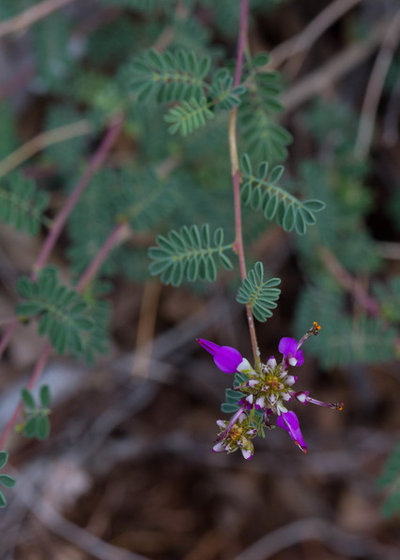
Jim & Lynne Weber
Distinguishing traits. Black dalea’s finely textured foliage adds an airy backdrop to the landscape throughout much of the year. The leaves are an attractive medium green color and are made up of tiny leaflets that are ⅛ inch long. The foliage is generally evergreen in zones 9 and above and semideciduous in Zone 8.
Violet flowers about 1 inch long begin to appear in late summer and last through fall, attracting bees and taking center stage in the garden.
Maintenance of this drought-tolerant shrub is minimal: Simply prune it back to 1½ feet tall and wide in spring every one to two years. This severe pruning will help maintain its compact growth while preventing it from becoming leggy.
How to Prune Your Flowering Shrubs for the Best Blooms
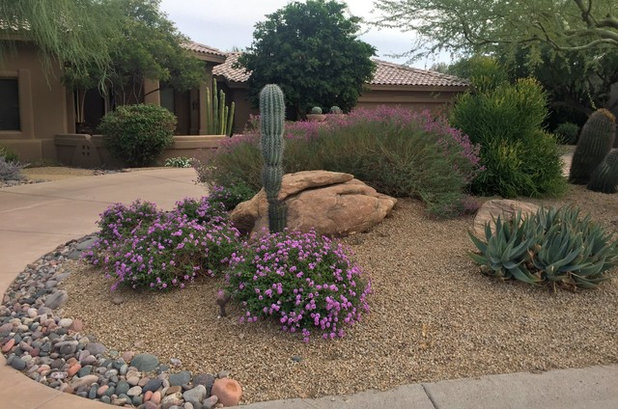
Noelle Johnson Landscape Consulting
How to use it. Create a cool color palette by teaming it with pink autumn sage (
Salvia greggii), white gaura (
Gaura lindheimeri), shrubby germander (
Teucrium fruticans)
and white trailing lantana (
Lantana montevidensis ‘Alba’) in the foreground.
Show off the attractive finely textured foliage by planting it next to succulents such as candelilla (
Euphorbia antisyphilitica), common sotol (
Dasylirion wheeleri) and Parry’s agave.
Maximize color contrast by adding plants with warm yellow color in front of black dalea, such as damianita (
Chrysactinia mexicana), golden barrel cactus (
Echinocactus grusonii) or ‘New Gold’ lantana (
Lantana ‘New Gold’).
Black dalea’s ability to thrive in full, reflected sun makes it a great option for medians, parking lots and against a south- or west-facing wall. It is also suitable for creating a naturally shaped 3-foot-tall hedge.
Shown: Black dalea planted behind a large boulder with columnar cactus and purple trailing lantana
(
Lantana montevidensis) in front.
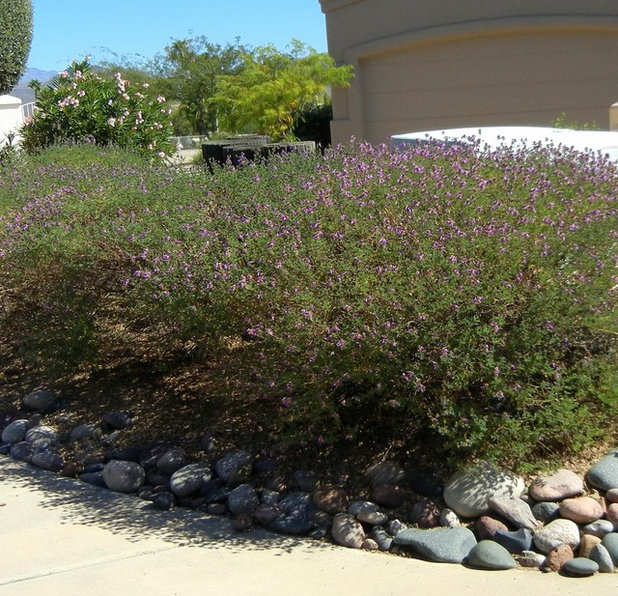
Noelle Johnson Landscape Consulting
Planting notes. Select a location in full sun — avoid planting in shade, which will cause it to grow loose and leggy. Black dalea isn’t fussy about soil as long as it is well-drained.





